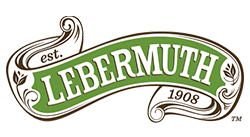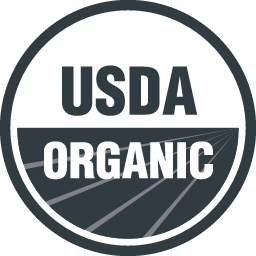Caveats crop up in promising hemp/CBD category
by Publication repost, on Apr 09, 2020
PUBLICATION REPOST l FOOD BUSINESS NEWS BY By Jeff Gelski
KANSAS CITY — The marketing runway looks long for the use of cannabidiol (CBD) in foods and beverages. Now, regulatory agencies, especially the US Food and Drug Administration, need to give a greenlight by providing more guidelines and rules. The FDA recently said it did not consider CBD, a hemp extract, to be Generally Recognized As Safe (GRAS) for use in foods, beverages and supplements.
Food and beverage companies looking to expand in the hemp/CBD space also will want to work with reliable ingredient suppliers, meaning those having worked in foods and beverages and those having their own reliable network of hemp farmers.
New York-based Nielsen recently projected the US hemp-based CBD market may be a $2.25 billion to $2.75 billion industry in 2020.
BDS Analytics, Boulder, Colo., last October at SupplySide West in Las Vegas projected overall CBD market sales would reach $4.1 billion in the United States in 2019 with grocery and convenience stores each accounting for 4% of the sales and mass merchandisers accounting for 1%. The projection for 2024 was $20 billion, with grocery accounting for 9%, mass merchandisers accounting for 9% and convenience stores accounting for 5%.
An Acosta shopper survey released in July 2019 asked people what types of CBD products they had used in the past six months. Among edibles:
- 37% Soft gels/capsules
- 32% Gummies
- 31% Chocolate
- 27% Tinctures
- 26% Tea
- 188% Water
- 16% Lozenges
- 8% Juice
Breaking it down by age group, 56% of millennials said they had used CBD products, which was followed by Gen X at 32% and baby boomers at 15%.

A roadblock did appear on Nov. 25, 2019, when the FDA issued warning letters to 15 companies for illegally selling products containing CBD in ways that violate the Federal Food, Drug, and Cosmetic Act. The FDA said, based on the scientific information supporting the safety of CBD in food, that it cannot conclude CBD is GRAS among qualified experts for its use in human food or animal food.
The FDA in its funding request for fiscal year 2021 asked for $5 million to regulate the usage of cannabis-derived substances such as CBD. The agency cited a significant increase in activity relating to the marketing of unlawful cannabis-derived products, especially those containing CBD.
“In many cases, product developers make unproven claims to treat serious or life-threatening diseases, and patients may be misled to forgo otherwise effective, available therapy and opt instead for a product that has no proven value or may cause them serious harm,” the FDA said in its request.
A GRAS status could open doors for widespread CBD use in food and beverages. HempRise, Jeffersonville, Ill., a business of Layn Corp., plans to file a GRAS application for CBD with the FDA either as a collaborative effect or on its own, said Collette Kakuk, global vice president of marketing at HempRise.
“Through Layn, we have experience in successfully filing GRAS applications, and this experience will be extremely beneficial to filing a comprehensive GRAS application for HempRise,” she said.
Others are positive about potential CBD regulatory gains as well.
“We believe it’s not if but when FDA figures out what’s acceptable,” said Peter Bisaccia, president of PHM Brands, Denver, the parent company of both Panhandle Milling Co. and Viobin LLC.
He advised companies to be cautious when making claims about what CBD does or does not do.
Daniel Kohler, chief executive officer of Hemp Synergistics, Wexford, Pa., said, “I embrace the FDA and the FTC (Federal Trade Commission) from a labeling standpoint because we were built to produce the highest quality CBD products with no THC (tetrahydrocannabinol).”
Viobin, an oil extraction business, was founded in 1936 and was acquired by PHM Brands in 2018, when wheat germ oil and defatted wheat germ were Viobin’s main products. Now, the company is offering CBD oils, CBD isolates and CBD lotions as well. Viobin buys directly from farmers.
“We like to use the term from ‘soil to oil,’” Mr. Bisaccia said.
Sourcing from reliable farmers is pivotal, he said. The levels of CBD in hemp biomass tend to have less fluctuation when sourced from farmers who have experience growing hemp. An unreliable farmer might say the hemp biomass is 10% CBD, but testing will show it is 3%, Mr. Bisaccia said.
Viobin, before taking in any hemp biomass, needs to see a certificate of analysis or an authorized letter showing the hemp biomass is less than 0.3% THC. Then the company does its own internal testing and has third-party testing, too.
Sourcing from reliable farmers is pivotal, he said. The levels of CBD in hemp biomass tend to have less fluctuation when sourced from farmers who have experience growing hemp. An unreliable farmer might say the hemp biomass is 10% CBD, but testing will show it is 3%, Mr. Bisaccia said.
Hemp ingredients work in grain-based foods items like baking mixes, brownies, cake mixes, cookies and bars, said Elizabeth A. Arndt, head of research and development for Panhandle Milling. CBD isolate is part of a full spectrum hemp extract, she said.
HempRise has invested $60 million to build an 80,000-square-foot processing facility in Jeffersonville to produce a full line of hemp extracts, including CBD and other cannabinoids, Ms. Kakuk said.
She said color, taste, solubility and shelf life come into play when working with hemp ingredients. The colors in hemp extracts may range from deep orange and yellow extracts to clear solutions, depending on processing and application. Since CBD may offer bitter notes, flavor masking/modulation is an important aspect. Solubility is important in beverages as is transparency so as not to affect the intended beverage color. Shelf life and ingredient stability over time, particularly in heated applications, should be considered. Intended potency levels need to be ensured.

“Through Layn, we have a rich history in collaborative research, development and innovation with the world’s largest food and beverage companies, exploring literally hundreds of natural botanical ingredients, applications and formulations, including factors such as taste, solubility, mouthfeel, shelf life and more,” Ms. Kakuk said.
Source: https://www.foodbusinessnews.net/articles/15728-caveats-crop-up-in-promising-hempcbd-category




